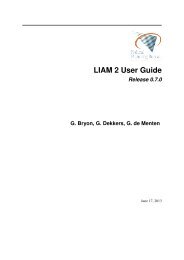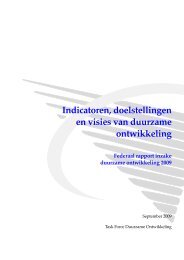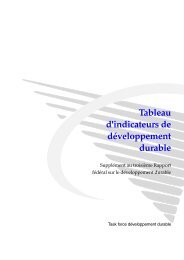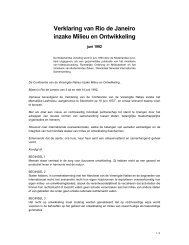long-term care use and supply in europe: projections for germany ...
long-term care use and supply in europe: projections for germany ...
long-term care use and supply in europe: projections for germany ...
You also want an ePaper? Increase the reach of your titles
YUMPU automatically turns print PDFs into web optimized ePapers that Google loves.
LONG-TERM CARE USE AND SUPPLY IN EUROPE | 39<br />
composition is assumed. For the Netherl<strong>and</strong>s, <strong>projections</strong> have been obta<strong>in</strong>ed from Statistics<br />
Netherl<strong>and</strong>s <strong>for</strong> the 2011-2060 period, by five year <strong>in</strong>tervals. For Germany, <strong>projections</strong> of ho<strong>use</strong>hold<br />
composition have been <strong>use</strong>d <strong>for</strong> the <strong>projections</strong> of home <strong>care</strong> <strong>use</strong> only, as ho<strong>use</strong>hold composition was<br />
not <strong>in</strong>cluded <strong>in</strong> the residential <strong>care</strong> model (see 4.3.4a). To the best of our knowledge, no ho<strong>use</strong>hold<br />
composition <strong>projections</strong> are available <strong>for</strong> Spa<strong>in</strong> <strong>and</strong> Pol<strong>and</strong>.<br />
Projected trends <strong>in</strong> ho<strong>use</strong>hold composition of the older populations differ <strong>for</strong> males <strong>and</strong> females (see<br />
Table A4.1 <strong>and</strong> Table A4.2 <strong>in</strong> Appendix), <strong>in</strong> great part due to changes <strong>in</strong> the differentials <strong>in</strong> life<br />
expectancy between males <strong>and</strong> females. In Germany, the shares of s<strong>in</strong>gle persons are projected to<br />
decrease among females between 2010 <strong>and</strong> 2050 <strong>in</strong> all age categories, while among males the shares of<br />
s<strong>in</strong>gle persons are projected to <strong>in</strong>crease. In the Netherl<strong>and</strong>s, the shares of s<strong>in</strong>gle persons are projected to<br />
rise substantially among males between 2010 <strong>and</strong> 2060, particularly at younger ages. At older ages, the<br />
shares of s<strong>in</strong>gle persons will slightly decrease <strong>in</strong>itially. Among females the share of s<strong>in</strong>gle persons is<br />
projected to decrease between 2010 <strong>and</strong> 2060 <strong>for</strong> the 75-79, 80-84 <strong>and</strong> 85+ age categories. At younger<br />
ages, the share of s<strong>in</strong>gle persons is projected to slightly <strong>in</strong>crease, after an <strong>in</strong>itial decrease.<br />
4.3.3 Educational level <strong>projections</strong><br />
Projections of the older population by age, gender <strong>and</strong> educational level have been made by the<br />
International Institute <strong>for</strong> Applied Systems Analysis (IIASA) <strong>for</strong> many countries, <strong>in</strong>clud<strong>in</strong>g Germany,<br />
the Netherl<strong>and</strong>s <strong>and</strong> Spa<strong>in</strong> (see Kc et al. (2010) <strong>for</strong> more details). For the ‘better education’ scenario,<br />
IIASA <strong>projections</strong> under the ‘fast track’ scenario <strong>for</strong> the 2010-2050 period have been <strong>use</strong>d. After 2050,<br />
no further change <strong>in</strong> educational level is assumed. For Pol<strong>and</strong>, no educational level <strong>projections</strong> have<br />
been <strong>use</strong>d, as data on <strong>care</strong> <strong>use</strong> by educational level was not available (see section 4.3.4).<br />
The educational level of the older population is generally projected to <strong>in</strong>crease (see Table A4.3 to Table<br />
A4.5 <strong>in</strong> Appendix <strong>for</strong> details of the educational level <strong>projections</strong>). In Germany, where very few older<br />
persons are <strong>in</strong> the lowest educational category <strong>in</strong> 2010, the shares of persons <strong>in</strong> the lowest category are<br />
projected to <strong>in</strong>crease slightly over the projection period.<br />
While <strong>in</strong> all three countries base year educational levels are lower <strong>for</strong> women than <strong>for</strong> men, the<br />
educational level of women is projected to <strong>in</strong>crease faster than that of men, result<strong>in</strong>g <strong>in</strong> decreased gender<br />
gaps <strong>in</strong> future years. In Spa<strong>in</strong>, the educational level of women is projected to surpass that of men.<br />
4.3.4 Care <strong>use</strong> models<br />
a. Residential <strong>care</strong> models<br />
For the Netherl<strong>and</strong>s <strong>and</strong> Spa<strong>in</strong> logit models have been estimated to exam<strong>in</strong>e the de<strong>term</strong><strong>in</strong>ants of<br />
<strong>in</strong>stitutionalisation, us<strong>in</strong>g national cross-sectional microdata representative <strong>for</strong> the population of persons<br />
aged 65 years <strong>and</strong> over (see Chapter 2 <strong>for</strong> a detailed description of the residential <strong>care</strong> models). Us<strong>in</strong>g<br />
the results of the logit models, predicted probabilities of residential <strong>care</strong> <strong>use</strong> have been calculated by<br />
comb<strong>in</strong>ations of age category, gender, ADL disability level, ho<strong>use</strong>hold composition, educational level<br />
<strong>and</strong> cognitive function<strong>in</strong>g (significant variables only), keep<strong>in</strong>g <strong>in</strong>come <strong>and</strong> number of chronic<br />
conditions (if significant) at their mean values (cell means). For the Netherl<strong>and</strong>s, data of the Aanvullend<br />
Voorzien<strong>in</strong>gengebruik Onderzoek 2007 (AVO, Research <strong>in</strong>to supplementary <strong>use</strong> of Services) <strong>and</strong> the<br />
Onderzoek naar Ouderen <strong>in</strong> Instell<strong>in</strong>gen 2008 (OII, Research on older persons <strong>in</strong> <strong>in</strong>stitutions) have been<br />
<strong>use</strong>d to estimate the residential <strong>care</strong> model. For Spa<strong>in</strong>, the Encuesta de Discapacidad, Autonomia<br />
Personal y Situaciones de Dependencia (EDAD, Survey on disability, <strong>in</strong>dependence <strong>and</strong> dependency)<br />
has been <strong>use</strong>d.<br />
Due to the unavailability of micro level data <strong>for</strong> Germany <strong>and</strong> Pol<strong>and</strong>, no logit models have been<br />
estimated <strong>for</strong> these countries. Instead, prevalences of <strong>in</strong>stitutionalisation by age, gender <strong>and</strong> disability<br />
have been calculated. For Germany data from the Long-<strong>term</strong> Care Insurance scheme (Statistisches<br />
Bundesamt, 2009) have been <strong>use</strong>d. Data <strong>for</strong> Pol<strong>and</strong> have been obta<strong>in</strong>ed by gather<strong>in</strong>g <strong>in</strong><strong>for</strong>mation from a<br />
number of sources with the help of CASE (Gol<strong>in</strong>owska & Sowa, 2011) <strong>and</strong> of Etienne Sail from DG
















